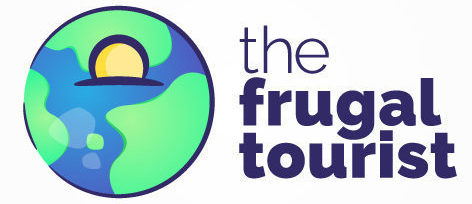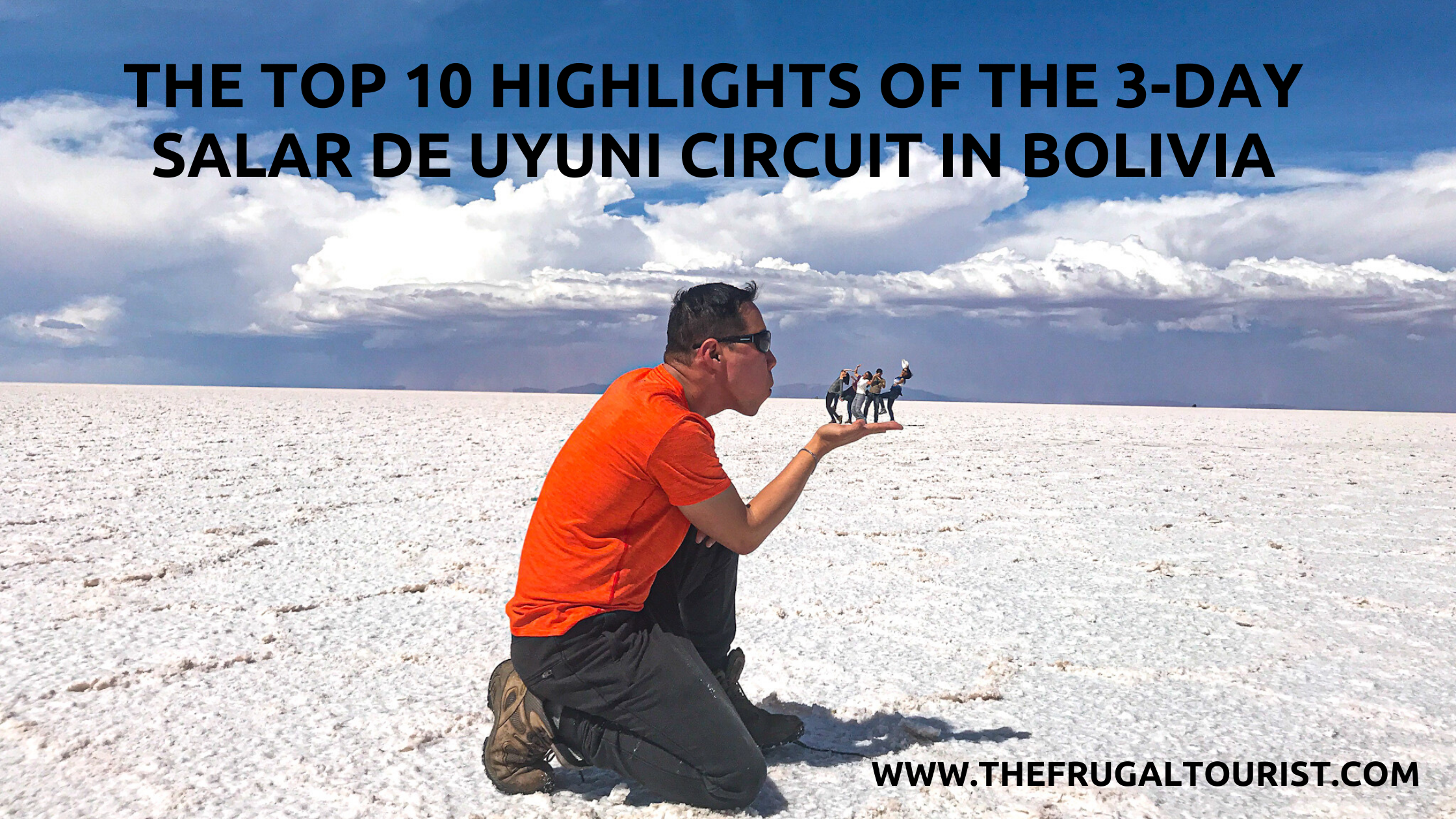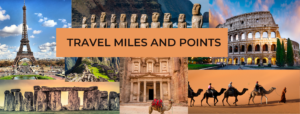ADVERTISER DISCLOSURE: The Frugal Tourist is part of an affiliate sales network and receives compensation for sending traffic to partner sites, such as MileValue.com and Cardratings. This compensation may impact how and where links appear on this site. This site does not include all financial companies or all available financial offers. Terms apply to American Express benefits and offers. Enrollment may be required for select American Express benefits and offers. Visit americanexpress.com to learn more. All information about the American Express Schwab Platinum has been collected independently by The Frugal Tourist.
EDITORIAL DISCLOSURE: Opinions, reviews, analyses & recommendations are the author’s alone and have not been reviewed, endorsed, or approved by any of these entities.
SALAR DE UYUNI, located in Bolivia’s high plateau (altiplano), is the world’s largest and highest salt flats.
It is one of those surreal locations on this planet that can be fittingly described as other-worldly.
Tours to the salt flats (Salar) typically originate from Uyuni, Bolivia, which has frequent connections to & from other parts of the country.


Salar De Uyuni Tours
Upon arriving in Uyuni, you must select the type of tour you want to take. The list below are some options:
- Day trips from Uyuni (Sunrise, Sunset, Starlight, or Full-Day)
- 3-Day, 2-Night Salar De Uyuni Circuit, which can be extended to Atacama Desert, Chile
- Customized private tours that can range from 1 to 5 days for travelers who have flexibility in terms of time and budget
Once you have decided which tour you want to take, make sure that you read this blog post on what you need to know before your trip to Salar De Uyuni for essential planning tips.
Below is a table comparing the first two options.
Based on your fitness level, money, and vacation time, you can decide which tour would better fit you.
| Day Tours from Uyuni | 3-Day Tour Salar De Uyuni Circuit to the border with Chile |
|---|---|
| Pros: More time in Salar De Uyuni Able to take various tours, including sunset, sunrise, and mid-day tours. No or low risk of altitude sickness More options for accommodations More budget-friendly | Pros: Mindblowingly diverse sceneries between Bolivia & Chile The option to hit two birds with one stone: See two South American highlights in one trip (Salar and Atacama) Saves time and resources. |
| Cons: Will relinquish the opportunity to see the marvelous landscapes between Bolivia and Chile. You will not be able to see the Atacama Desert on this trip. | Cons: Increased likelihood of experiencing altitude sickness Accommodations are very basic Extreme weather conditions Almost absent creature comforts More expensive |

In this blog post, I count down the top ten highlights of the three-day Salar De Uyuni circuit, extending to Chile’s border.
The diversity of landscapes and the sheer desolateness of this region are just a few reasons to include this trip on your bucket list.
Travel Miles and Points Facebook Group
Would you like to learn how to travel frugally by using credit card points?
Join other points enthusiasts in our free Travel Miles and Points Facebook Group, where we post and discuss all miles and points deals and promos.
We look forward to seeing you there!
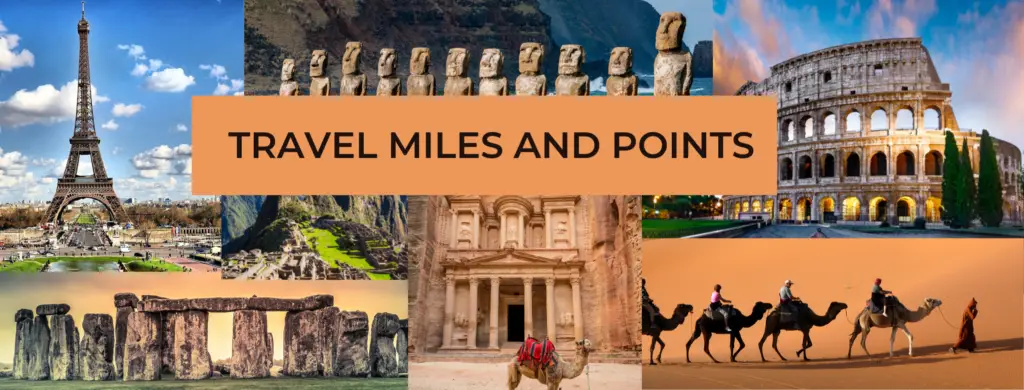
How Did Salar De Uyuni Form?
This endless expanse was occupied by Lake Minchin about 30,000 years ago before it completely evaporated and was replaced by Lake Tauca and other small lakes.
Due to these lakes’ high altitude location, there were no drainage outlets, so minerals that originated from the mountains flowed and settled into them, eventually becoming salt when the lakes dried up.
A rise in temperatures coupled with a change in climate from wet to dry caused the water to slowly evaporate. As this water evaporated, high salinity levels caused a thick salt crust to form, leaving behind the impressive salt flat that we see today. Water underneath the salt flat continues to evaporate under the heat of the sun, leaving behind more salt on the surface. The rate of evaporation is ten times more than precipitation, meaning that Salar de Uyuni is a never-ending salt source!
www.salardeuyuni.com
Top Ten Highlights of the 3-Day Salar De Uyuni Circuit
1. Salt Flats
The magnificent Salt Flats are the principal reason tourists brave the elements to reach this remote region.
No amount of superlative descriptions can wholly capture the immensity and splendor of Salar De Uyuni.
Whether you embark on the day tours or the traditional 3-day circuit, the ultimate highlight will likely be this endless barren expanse of salt.
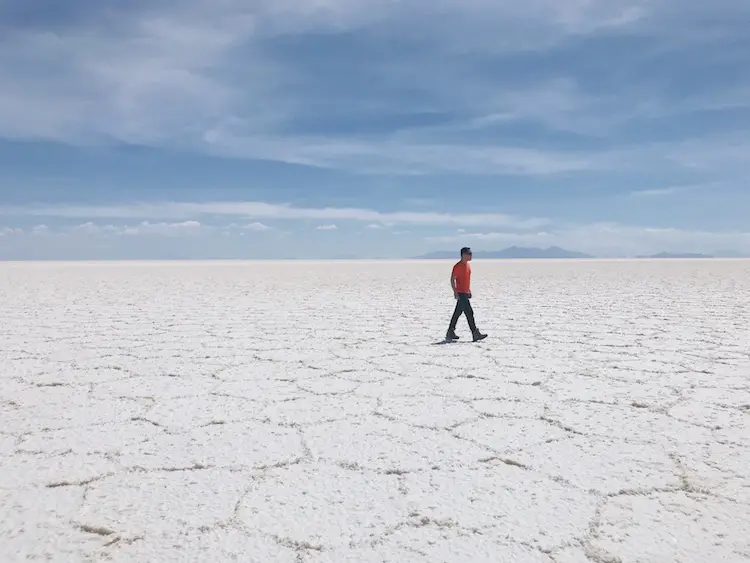
Prepare Your Props for Perspective Play
The incredibly flat landscape makes it the optimal location to experiment with visual perspective play.
Prepare your props ahead of time. It is also recommended that you check out Instagram for creative ideas.
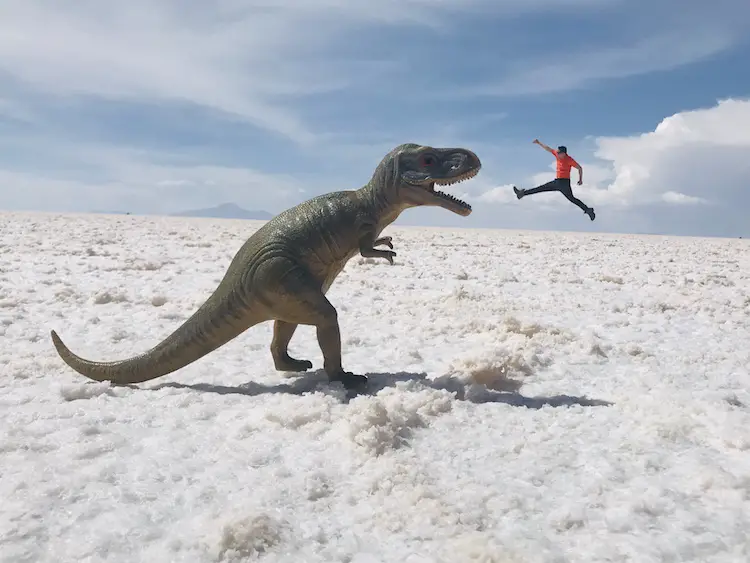
Dinosaurs, empty Pringles containers, beer bottles, hats, etc. Essentially, the sky’s the limit to what optical illusions you can explore and successfully pull off.
Sunset/Sunrise Tours
Experiencing Salar during sunset, sunrise, or starlight is only available when booking day tours from Uyuni.
Lamentably, witnessing these splendid events is impossible when taking the traditional 3-day option, as you arrive at the salt flats around midday with this excursion.
Alternatively, staying an extra full day in Uyuni before or after your 3-day tour is a viable option if you wish to participate in these specialized trips.
Virtually almost all companies in Uyuni offer them.

Dakar Rally and Flag Monument
Tour groups frequently stop at the Playa Blanca Salt Hotel for lunch.
Although overnight stays are no longer allowed, it’s worthwhile to glimpse the salt sculptures inside.
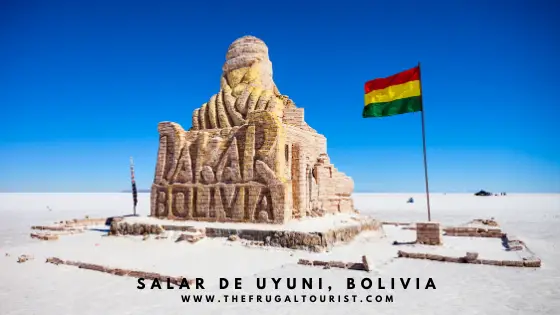
Outside of this hotel is the Dakar Rally and Flag Monument.
Do not forget to bring a flag of your home country so you can add it to the collection here.

2. Isla Incahuasi
This enthralling cacti-speckled island smacked in the middle of a boundless sea of salt was one of the most memorable landscapes on this tour.
A small admission fee is required to hike to the top of the hill, passing through trails flanked by cacti of various sizes and shapes.
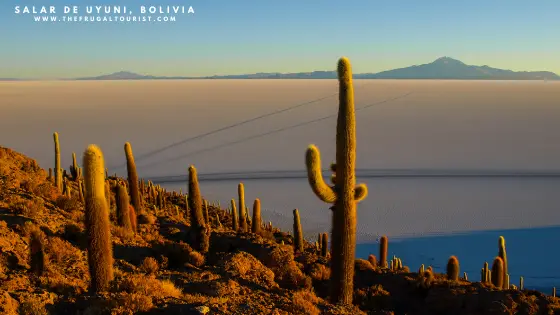
Stops here typically last an hour to account for the round-trip hike, which ordinarily lasts about 20-30 minutes, plus another 15-30 minutes allotted for picture taking.
From the peak, you can see dramatic views of cacti amidst an ocean of salt in the background.
You’ve traveled this far, so do not skip this trek up to the viewpoint. It is worth the money!
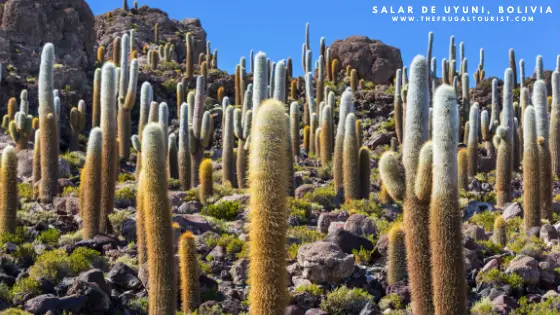
3. Train Cemetery
Tours from Uyuni regularly stop at the Train Cemetery before proceeding to the Salt Flats.
Uyuni, situated high above the desert-like plains of Bolivia, purportedly was the proposed site of a massive train hub at the turn of the 20th century. However, plans did not materialize as planned.

Consequently, this botched hub bore fruit to a fascinating train graveyard.
This massive cemetery contains at least 50 abandoned locomotives still gradually succumbing to rust and corrosion due to the salty winds.
No admission fee is required, and there are no restrictions on what you can do to explore these wonderful transport artifacts from the past.
However, please exercise caution if you decide to climb on top of these deteriorating trains.

4. Flamingos
Should you take the three-day tour to the Chilean border, three South American flamingos (Chilean, Andean, and James’s flamingos) will be on display.
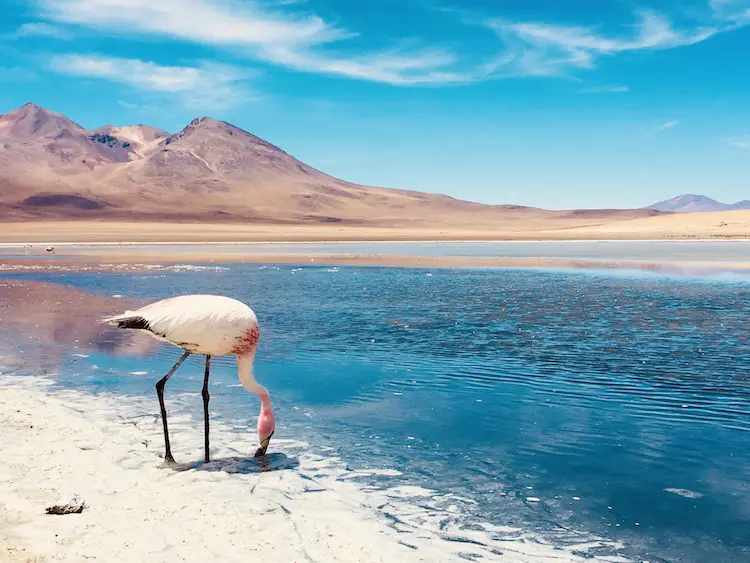
Our tour stopped at 3-4 different lakes that serve as habitats for these stunning creatures.
Ensure you have enough camera space, as you’ll snap pictures left and right.

5. Lakes
Numerous lakes dot the region between Salar De Uyuni and the border with Chile.
The most popular ones are Laguna Colorada and Laguna Verde.
Laguna Colorada is a lake with a red-orange hue ringed by white sediments formed by the large amounts of sodium and magnesium deposits in the water.
The red-orange color comes from algae and plankton that flourish here because of these minerals.
A short trail leads to the top of a hill with sweeping lake vistas.
It would be relatively easy to climb if it were not for the hurricane-strength winds and freezing temperatures.
The path ultimately leads to the shoreline, where you can see the colorful water and flamingos up close.
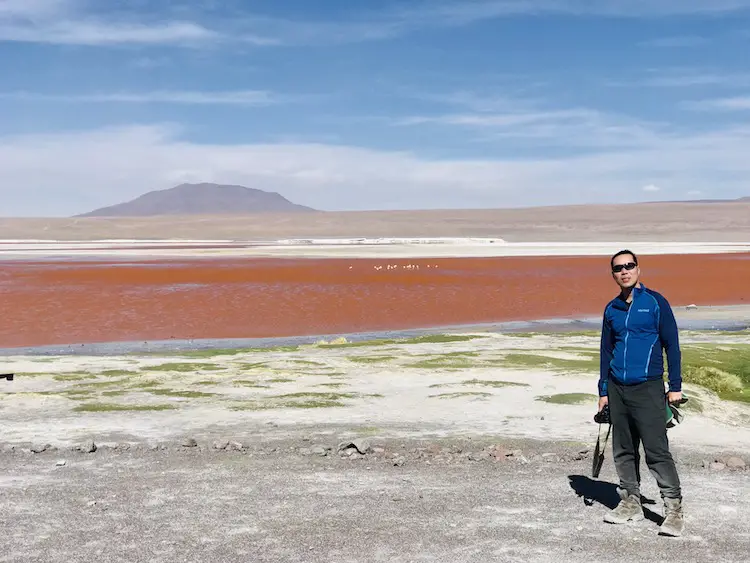
Near the border with Chile is the picturesque Laguna Verde, fringed by stunning volcanoes, including one of Bolivia’s most famous, Licancabur.
The captivating green hues originate from the combination of lead, sulfur, arsenic, and calcium carbonates.
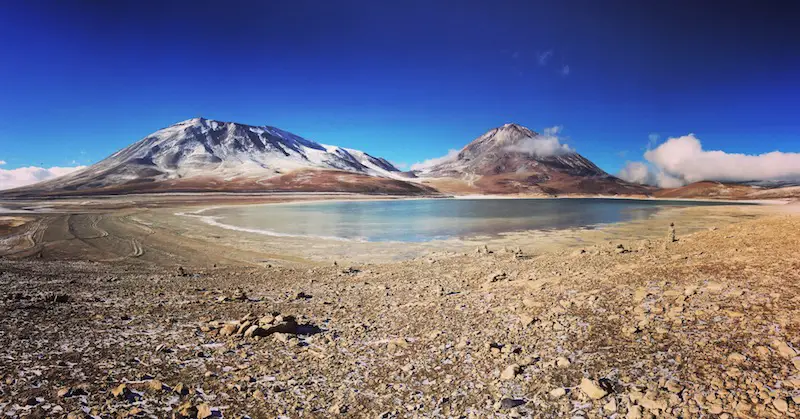
6. Volcanoes
The 3-day tour I booked included a short hike around a collapsed volcanic crater.
If your tour does not offer this, do not fret. Breathtaking volcanoes are omnipresent throughout this journey.

One of the most gorgeous volcanoes in this journey is Licancabur, which straddles the border of Bolivia and Chile, adjacent to Laguna Verde.
Licancabur can be climbed via a private tour.
Remnants of Incan civilization have been excavated here, so locals have long considered it sacred.

7. Geysers
On our third day, we woke up at dawn to make a beeline for Sol De Mañana, an enormous moonscape field riddled with bubbling sulfur-scented geysers.
Exercise caution, as severe burns can occur.
Even though the steam from the pots was smoldering, it was not enough to keep us all warm as the early temperatures were beyond frigid. Dress in layers.
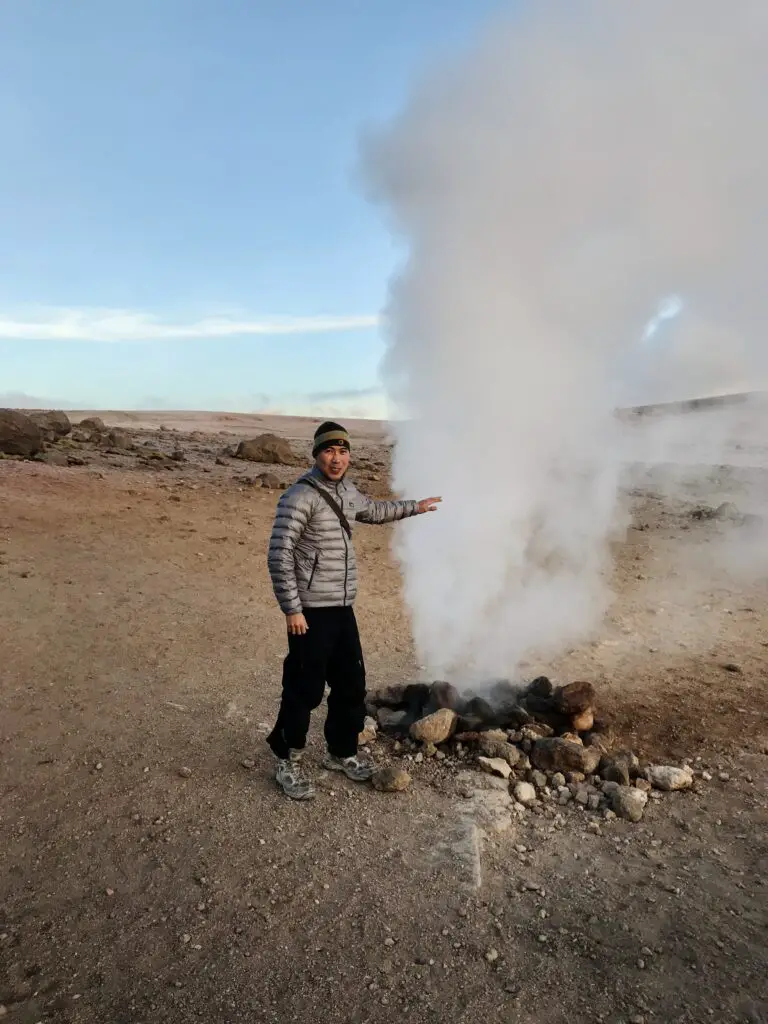
8. Hot Springs
As you approach the border with Chile, a chance to dip in a small hot spring called Termas Del Polques, fortunately, presents itself to almost-hypothermic tourists.
The mineral-rich water here supposedly has healing powers against arthritis and rheumatism. Changing facilities are available.
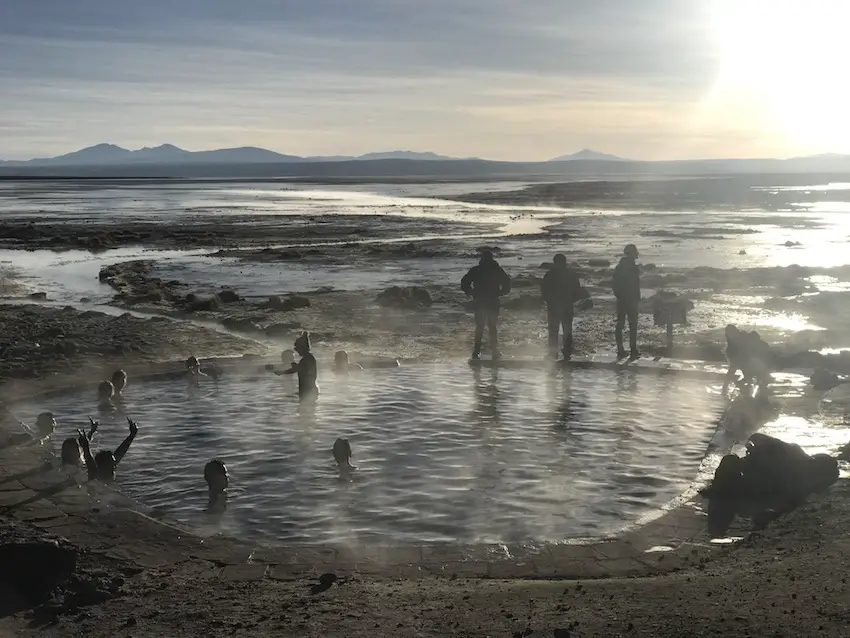
9. Desert
Several miles from the border outpost with Chile and right before Laguna Verde is this dreamlike desert valley named after the artist Salvador Dali.
The landscape here resembles some of Dali’s surrealist masterpieces, hence the name Desierto Salvador Dalí or Valle de Dali (Dali Valley).
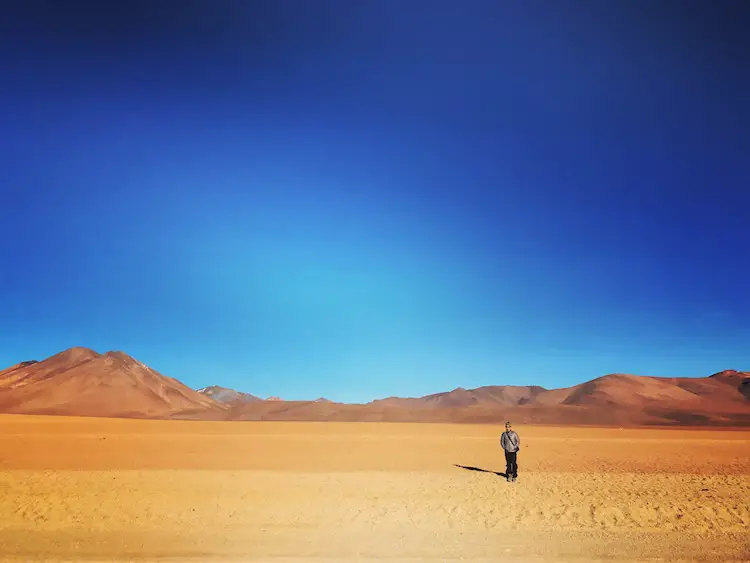
10. Rock Formations
An unforgettable pitstop before Laguna Colorada is the location of one of the most photographed rock formations in Bolivia.
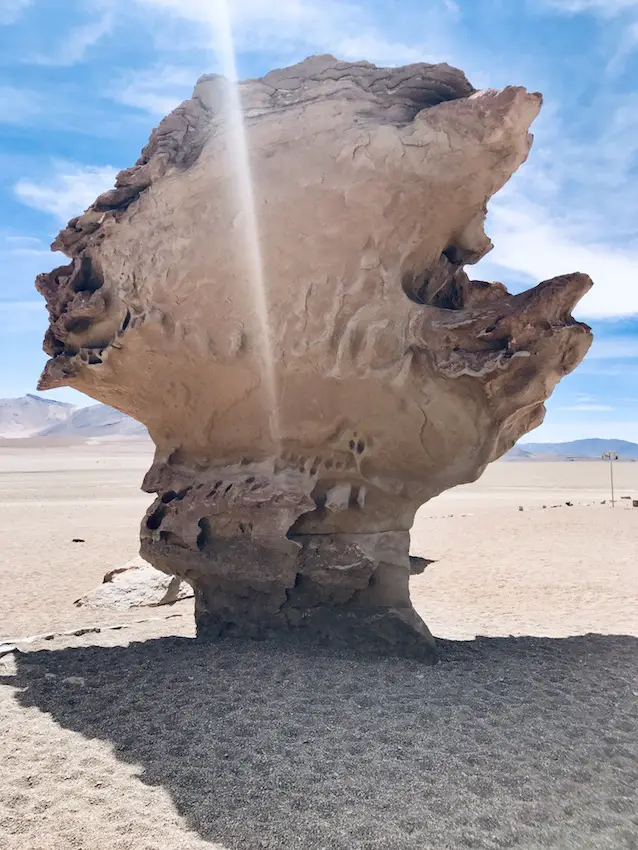
Named Árbol de Piedra, or stone tree, its configuration has been chiseled by strong winds that eroded the rock, thus crafting a smooth surface.
Other interesting rock formations also surround this incredible natural wonder.
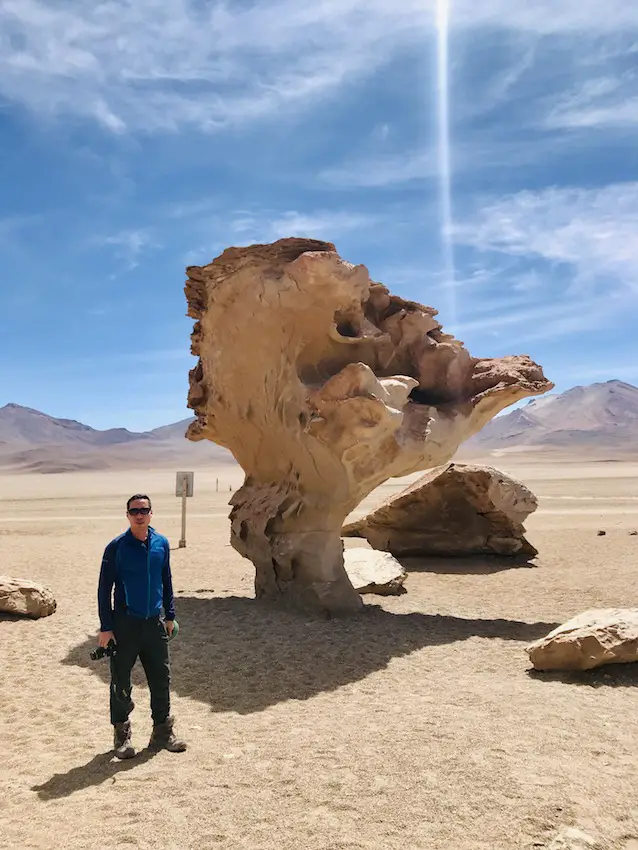
Before Your Trip
1. Passport & Visa
Bolivia requires that your passport be valid for at least 6 additional months after entering the country.
Please check the visa requirements for your particular passport as well.
As of December 2019, U.S. Citizens are no longer required to have a visa to enter the country for stays no more than 30 days.
I used my Philippine passport to enter Bolivia visa-free.
It is always good practice to do the following before any trip:
- Photocopy your passport and other travel documents
- Scan your passport and other travel documents and email them to yourself
2. Yellow Fever Vaccine & Certificate
Certain regions of Bolivia are known hot spots for Yellow Fever.
You should have proof of your Yellow Fever vaccine before entering the country.
They may deny your entry if you do not have this on hand.
3. Travel Insurance
Traveling to the Salt Flats? You may want to consider having travel insurance with adequate coverage.
It is not uncommon for some travelers to get incredibly sick because of extreme weather and altitude conditions.
I use Travel Nomads whenever I travel. Feel free to get a quote below.
4. Pack Your High-Altitude Medications
Before your trip, visit your travel nurse about a month in advance.
Inform them that you require a prescription for altitude sickness along with the Yellow Fever vaccine mentioned earlier.
It’s common for many travelers, myself included, to need this additional precaution.
5. Pre-Book Your Accommodations
Accommodations are basic practically everywhere, so make sure you do your research by reading reviews before booking.
Feel free to explore deals on Agoda.com or Booking.com.
Accommodations are included in the tour price if you are joining the 3-day, 2-night odyssey from Uyuni to San Pedro De Atacama, Chile.
However, expect sleeping quarters up in the mountains to be uncomfortably barebones.
Where I Stayed:
In La Paz, I stayed at Tinka Hotel, which I reserved via booking.com. It was centrally located in a safe area within walking distance of the cable car station and downtown.
In Uyuni, I stayed at Hotel Jumari, which I reserved via booking.com. It was near the airport and Uyuni’s main drag, making various restaurants and tour companies easily accessible.
Spending a night in an ice hotel is also possible, although substantially more costly. This is an option if you are joining a private tour.

6. Prepare Your Gear
Do not underestimate the sub-zero climate up in the antiplano.
Prepare appropriate outerwear and purchase hand warmers, which were invaluable during the trip.
Checklist:
- Handwarmers
- Sunglasses
- Sunscreen
- Lip Balm with SPF
- Headlight
- Scarf
- Gloves
- Coats/Jackets
- Quick-dry towels
- Hiking boots
- Sleeping bag
- Portable Battery for your camera and phones
- Water bottle
- Day pack
- Moneybag
- Warm Socks
- Gorilla Tripod
- Hand Sanitizer
- Wipes
- Other toiletries
- Medications
7. Guidebooks
I am a big fan of Lonely Planet books, so I bought the book Lonely Planet Bolivia from Amazon before the trip.
You can also borrow the book for FREE at your nearby public library.
8. Book Your International Flights Using Miles
Since I flew during high season to Bolivia, I wanted to avoid paying an arm and a leg for a plane ticket, so I booked using miles.
All of my trips over the past decade have been ALMOST FREE via travel miles.
I’ve visited over 90 countries, primarily using miles and points.
I accrue points by applying for credit cards and then booking my flights way in advance, so I’m guaranteed to obtain a reward seat on the plane.
9. Book Your Domestic Connection
If you are flying, booking your flights as soon as you have a definite time frame in mind is best.
I booked my flights with Amaszonas Airlines about 6-7 months out because I visited Bolivia during their busy Christmas holiday.
Taking the train or public bus should be a bit easier as there are multiple daily options, but it is best to pre-book at least a day or two in advance, especially during high season.

10. Decide on What Tour to Book
An entire blog post is dedicated to solving this question and other essential tips.
Click the image below to be redirected to the blog post.

Final Thoughts
Salar De Uyuni is a must-visit destination for travelers seeking unique and breathtaking experiences.
This natural wonderland has something for everyone, from the mesmerizing salt flats to the vibrant flamingos, majestic volcanoes, spectacular geysers, and even the intriguing train cemetery.
However, being well-prepared before embarking on your journey is important to ensure a smooth and enjoyable trip.
By following the tips in this article, you can make the most of your visit to Salar De Uyuni and create unforgettable memories that will last a lifetime.
So pack your bags and get ready to explore one of the top ten things to see in Salar De Uyuni – an adventure like no other!

ADVERTISER DISCLOSURE: The Frugal Tourist is part of an affiliate sales network and receives compensation for sending traffic to partner sites, such as MileValue.com and Cardratings. This compensation may impact how and where links appear on this site. This site does not include all financial companies or all available financial offers. Terms apply to American Express benefits and offers. Enrollment may be required for select American Express benefits and offers. Visit americanexpress.com to learn more. All information about the American Express Schwab Platinum has been collected independently by The Frugal Tourist.
EDITORIAL DISCLOSURE: Opinions, reviews, analyses & recommendations are the author’s alone and have not been reviewed, endorsed, or approved by any of these entities.
USER-GENERATED CONTENT DISCLOSURE: The comments section below is not provided or commissioned by the bank advertiser. Responses have not been reviewed, approved, or otherwise endorsed by the bank advertiser. It is not the bank advertiser’s responsibility to ensure all questions are answered.
